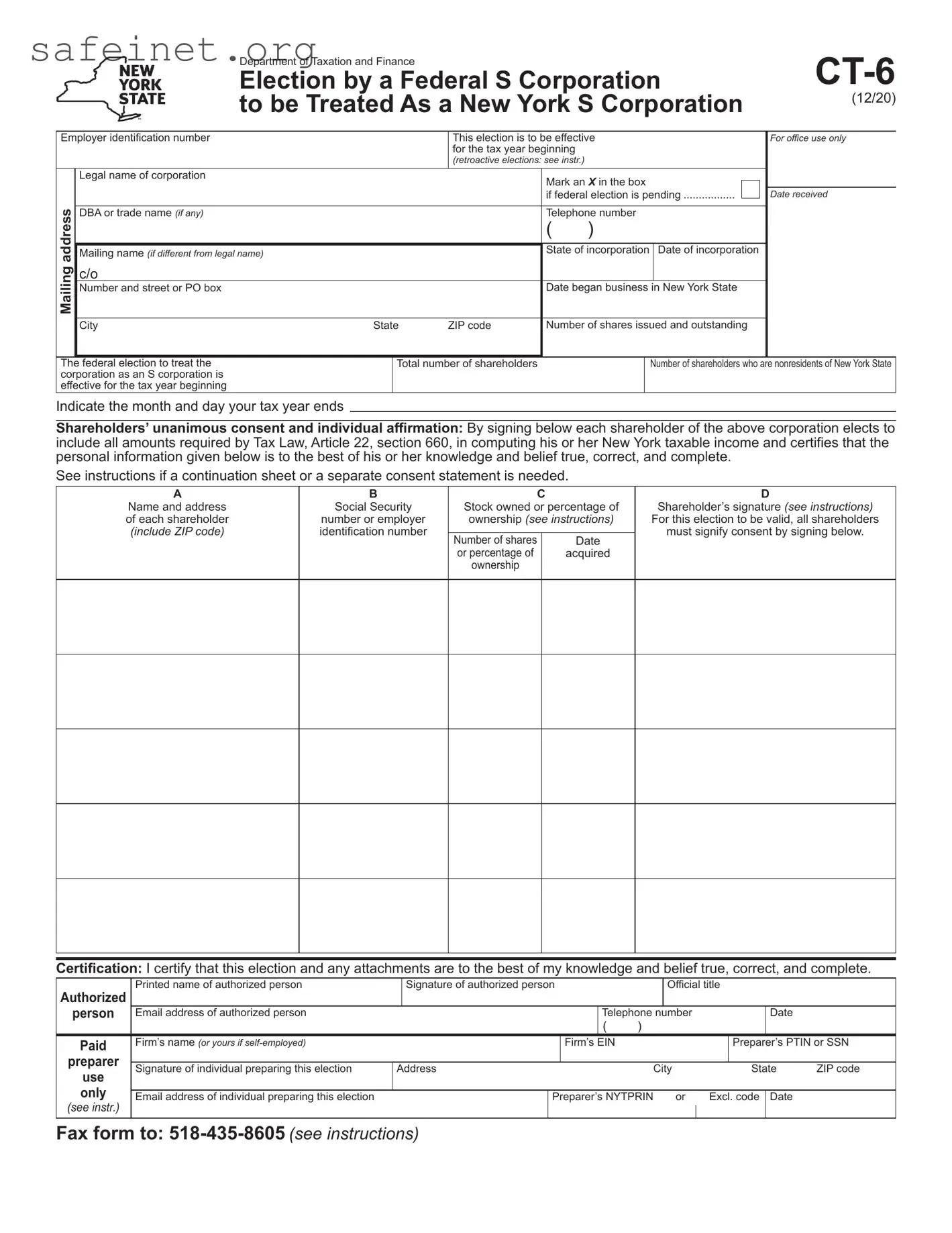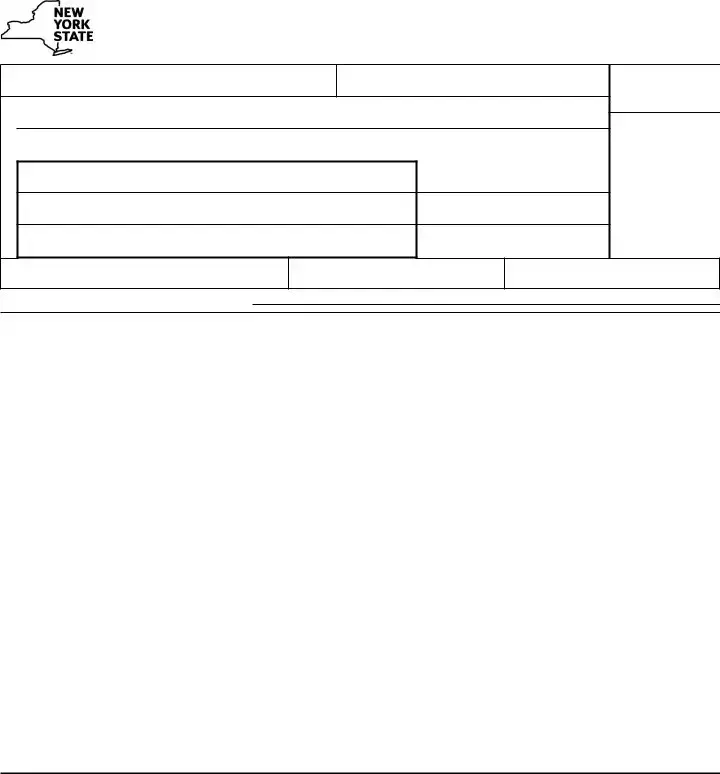The CT-6 form, which allows a federal S Corporation to elect to be treated as a New York S Corporation, shares similarities with the IRS Form 2553. Both forms enable corporations to elect S Corporation status, providing tax benefits under specific conditions. Form 2553 requires the business to provide information such as the name, address, the number of shareholders, and their consent. Just like the CT-6, this IRS form also asks for shareholder signatures, affirming their agreement to elect S Corporation status and acknowledging the conditions that come with this election.
An additional document related to the CT-6 is the IRS Form 1120S. This form is used by S Corporations to report income, deductions, and credits annually. Similar to the CT-6 form that establishes the entity’s status, Form 1120S requires detailed information about the corporation's finances. Both forms focus on the corporation's structure and tax obligations and often need to align information across state and federal forms to ensure compliance and avoid issues with tax liabilities.
The CT-6 is also similar to the New York State Corporation Franchise Tax return, commonly referred to as Form CT-3. The Franchise Tax applies to corporations conducting business in New York, and any company electing S Corporation status must complete this tax form alongside the CT-6. Both documents focus on income reporting and can influence the tax liabilities of the corporation, reinforcing the need for consistency and accuracy in the financial details provided.
Additionally, the CT-6 mirrors the New York State Form IT-201, which is the Resident Income Tax Return. Individual shareholders who are residents of New York State must report their share of corporate income on this form. The interplay between the CT-6 and IT-201 demonstrates a seamless connection between corporate tax elections and individual tax reporting, highlighting the importance of shareholders' compliance with state tax regulations.
The CT-6 form also has similarities with the Form 1065, which is used for partnerships. As with the CT-6, this form provides a framework for electing an entity structure that affects how income is reported and taxed. Both forms require the respective entity to disclose information about ownership and shareholder agreements, emphasizing the necessity of collaborative consent among stakeholders when determining tax treatment.
In a more general context, the CT-6 resembles the various state-specific S Corporation election forms used in other states. Just like the CT-6, these forms allow federal S Corporations to elect state S Corporation status, thereby providing similar tax advantages. Each state-specific form will have its own requirements but maintains the core objective of granting S Corporation status at the state level, dependent on the original federal election.
Moreover, the CT-6 can be compared to the IRS Schedule K-1 (Form 1120S), which is issued to shareholders of S Corporations. This schedule reports their share of the corporation’s income, deductions, and credits. Both the CT-6 and Schedule K-1 are interconnected, as the election to be treated as an S Corporation through the CT-6 directly influences the information reported to each shareholder on their K-1, making accuracy and transparency critical for all parties involved.
Finally, the CT-6 reflects similarities with the Articles of Incorporation, where businesses define their structure and operational guidelines. While the CT-6 specifically addresses tax election status, both documents are foundational for a corporation's legal and operational framework. They require details regarding ownership, business operations, and compliance with relevant state laws, emphasizing their complementary roles in shaping a corporation’s legal identity.

